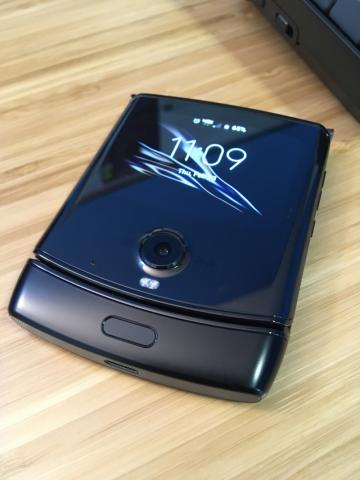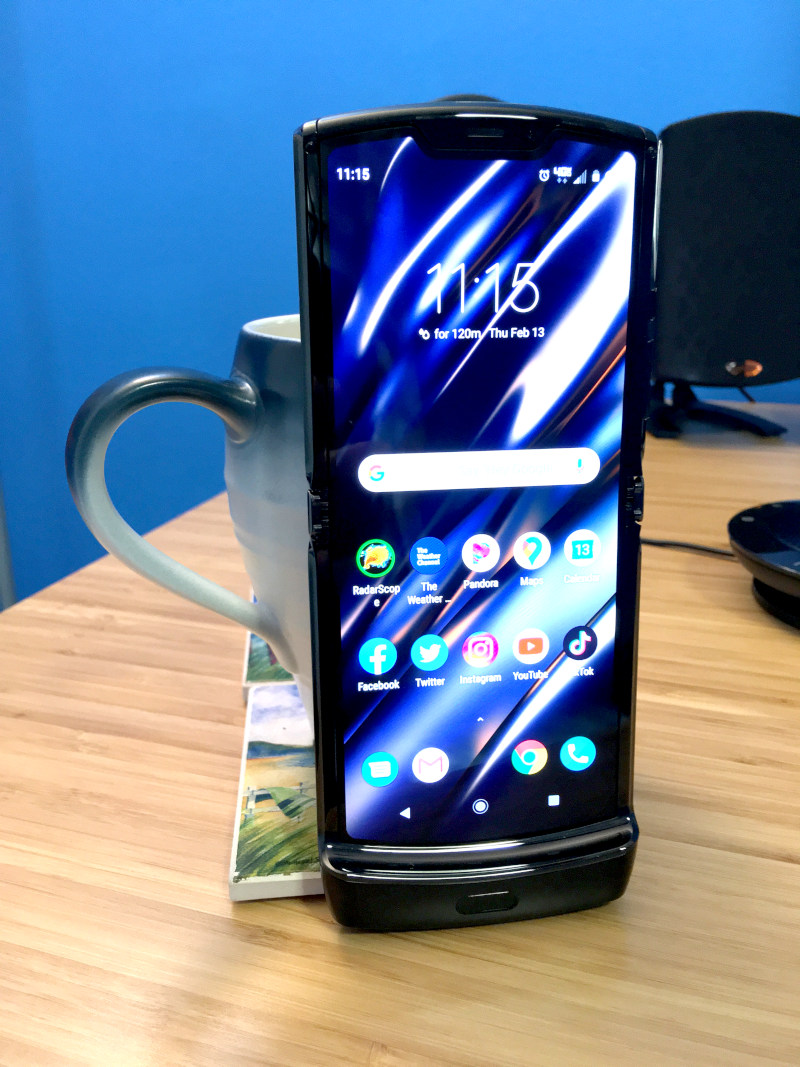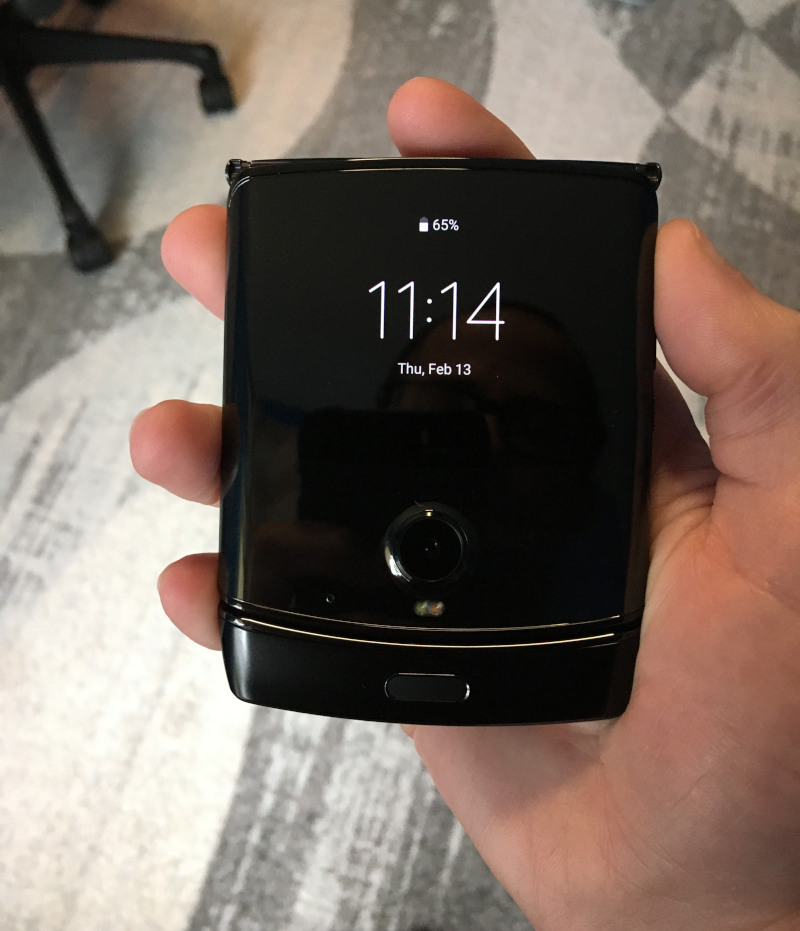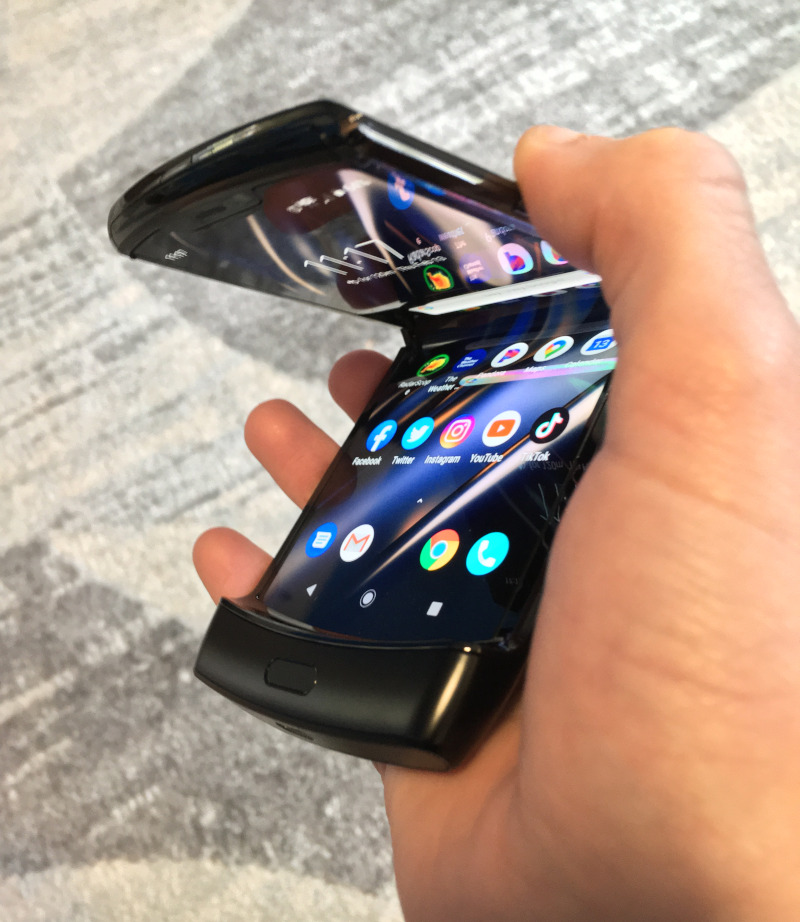
Negativity about the new 2019 Motorola Razr has been abundant, especially now that Samsung has released its new foldable phone, and CNET's folding test of the Razr indicated the hinge mechanism might compromise the longevity of the device. However, many have overlooked what makes the Razr an excellent device, despite some shortcomings. I have been using the Razr since launch day, so let's look at the benefits other reviewers have missed, and some cons others have failed to mention.
Design: Beautiful aesthetics.

The homescreen on my 2019 Motorola Razr
The nostalgia and design of the early 2000s Razr is what makes this particular device stand out in the small-but-growing foldable phone crowd. The rounded "chin" on the bottom of the device hosts some of the phone’s electronic components and was a design element on the original Razr. While some may find it awkward when using the phone, I discovered it allows you to grip the phone without accidental touches on the screen. Who likes opening links by mistake? Also, the fingerprint sensor on the chin makes a world of sense; you can access it no matter which hand you use to hold the device.
Mechanical: The hinge makes a sound when opening and closing -- you'll get over it (mostly).
Each time you open and close the phone there is a slightly concerning creaking sound that emanates from the hinge; it’s created from the mechanical gears moving as the screen folds and tucks into the chin. After a week of using the phone, I find it a non-issue and have accepted that it is by design. I would rather have a slight noise oddity in the hinge mechanism, which allows the phone to fold perfectly flat, than have the phone be slightly wider on one side when flipped closed (like the Samsung Galaxy Z Flip).
External display: Great for checking and dismissing notifications.

The external display is something I utilize more than I anticipated. I can wave my hand over the phone while it is locked and the 2.7-inch display will glow, showing me the time, battery, and notification icons. I can then tap an icon to read more or dismiss it. For comparison, the external display on the Samsung Galaxy Z Flip seems like an afterthought, since it’s a ticker-style 1.1-inch display. Why would Samsung make such a tiny external screen, which plays an important role in today’s folding smartphone? Perhaps Samsung wants you to buy one of their smartwatches, but the point of compact phones is to not be weighed down by additional devices.
Razr specs and comparing it to the Samsung Galaxy Z Flip.

Yes, it's true... The Samsung Galaxy Z Flips beats the Razr in almost every regard when it comes to the internal technical specifications and camera, and it’s cheaper. I'm not going to spend much time on this because there are several articles where you can read about this, such as CNET's comparison.
One benefit of Samsung’s Z Flip is its internal screen, which uses a proprietary thin bendable glass that is less prone to scratching than Motorola's implementation of a plastic OLED display. However, Motorola's phone has a water-repellant coating, where Samsung's Z Flip has no mention of any water resistance. Additionally, the small ticker-style display on the Z Flip and the camera sensors are oddly placed, making the phone look asymmetrical when the external display is off (which is essentially most of the time).
Unfortunately, the Motorola Razr takes horrible photos compared to the Z Flip, even in bright sunlight. I found colors washed out and the details completely missing in some lighting conditions. Shifting to performance, the processor has no issue with handling web browsing, watching long sessions of TikTok, navigating with Google Maps, and multi-tasking. Battery life is fine for the average user, unless you plan to watch videos all day or are relying on navigation for several hours. I would definitely bring a power bank with me if traveling on an all-day excursion.
My final con for the Motorola Razr is its weight -- it weighs 205 grams. For comparison, the iPhone 11 Pro, which you could argue is “compact” for today’s standards in the iPhone world weighs only 188 grams. The Samsung Galaxy Z Flip weighs only 183 grams. The Razr’s weight is manageable due to the small footprint of the Razr when it’s folded, but if you’re slipping it into gym shorts, it feels like a tiny paperweight banging against your legs as you walk. This is unfortunate considering the Samsung Galaxy Z Flip weighs less, and has a larger battery and larger screen. It must be the Razr’s stainless steel frame and specialized hinge that’s tipping the scales.
Conclusion
While most people will clearly choose the Z Flip due to the Razr's shortcomings, the nostalgia and design of the Razr win my heart. Though, I genuinely can't recommend any folding phone until the price comes down and we see how the bendable displays fare after daily abuse.